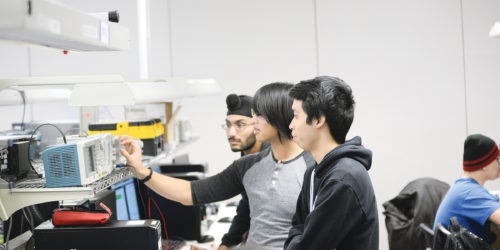
Creating Sense of Belonging: From an International Student’s Perspective
By Hiral Joshi, International Faculty Development Assistant, Teaching and Learning
I am Hiral Joshi a full-time student for the Career Development Practitioner course at the Doon campus. I graduated Teaching English as a Second Language in April 2021 from Conestoga. I was born and brought up in the western part of India. I did my Masters in Linguistics and taught Communication Skills, Leadership Management and English as a Second Language in India and In Canada, I am working as an ESL teacher. I am associated in Conestoga as an ISAC member for CSI, I worked on a study-work basis as a document editor for Conestoga LINC and currently, I am an International Faculty Development Assistant with the Teaching and Learning department.
Moving to a new country is an overwhelming experience for most people. Despite the excitement and the newness around, it is not easy to identify and belong to a new place, culture, education and environment. I have experienced this as an international student at Conestoga College. I have written this post from my perspective to enhance the understanding of creating a sense of belonging in the international students.
How do I feel a sense of belonging in the classroom?
In my class, for example, my teachers ask me lots of questions about my social beliefs, which helps me express myself and helps my teachers understand my background and current mindset. When teachers express in learning about me, I feel more connected to them and the course. South Asians appreciate social-academic integration. This means that they expect their classroom to have an open environment that is focused on social interaction while converging on important academic lessons. (Zimmermann, 2015)
South Asians are mostly multilingual and they take pride in having this vital skill. It is significant to have a classroom culture where their language, accent and register is welcomed. When I was a TESL student at Conestoga, my professors gave me the freedom to take my time to state my opinions in English. They acknowledged that my accent and pronunciation is different and that I cannot change it to teach English in Canada.
Here are 3 simple ways to help students to create a sense of belonging in a classroom:
Wish/Celebrate/Acknowledge South Asian Festivals
Wishing Diwali to Indian students certainly makes them feel included and welcomed in the classroom. Obviously, it is impossible to know or remember these celebrations, but it is a good idea to bring this conversation each month. For instance, “today is the first day of the month so, what is special about February in your culture? Do you have any major events this month?” Asking such simple questions elevates one’s wish to communicate in the class. As a student, I love when teachers ask these questions to the class.
Give Examples
In contemporary teaching, good examples are a great way of learning and remembering the content for a long time. It is incredible to include examples in the lesson by calling out student names or referring to their culture or country. My teachers always give Canadian data in class and then connect them to students’ home countries. This gives a sense of belonging in the classroom.
Count on Diverse Groups
While group work is mandatory for better learning, group formation is equally essential. Many times, it is left to technology to create groups. This can be misleading for some students who cannot find comfort working in a group. If the group is diverse, let’s say, one Canadian, one south Asian and one Arabic student, they would have lots of new ideas to share because of the difference in background. It is possible that they don’t gel well initially, but they would connect eventually. This will help students make real connections and learn from each other by respecting social differences.
In my opinion, inclusiveness is the key to outstanding leadership, teaching, and learning. The journey can be smooth or bumpy, but the only concern is, did we try? As an international student, what I most treasure is when I see at least my Professor is trying to create a sense of belonging for the students.
References
Goodenow, C. (1993). Classroom belonging among early adolescent students: Relationships to motivation and achievement. Journal of Early Adolescence, 13(1), 21–43.
Education. (2021). UNICEF South Asia. Retrieved February 1, 2022, from https://www.unicef.org/rosa/what-we-do/education#:%7E:text=South%20Asia%20also%20had%20the,to%20corporal%20punishment%20and%20discrimination.
Zimmermann, K. (2015). What is culture? Retrieved February 1, 2022, from http://www.livescience.com/21478-what-is-culture-definition-of-culture.htm






